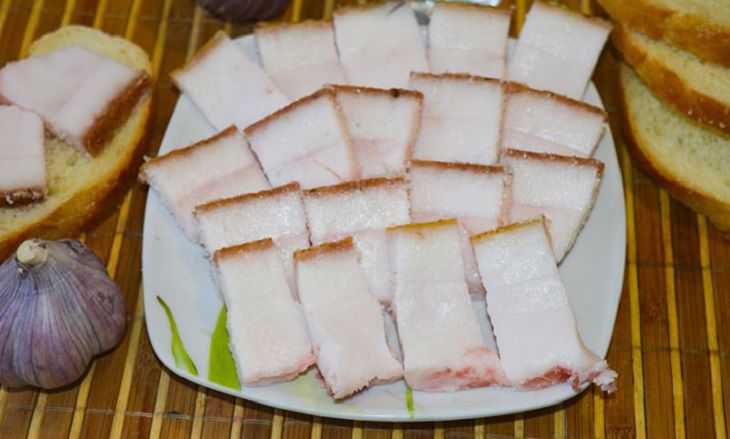Choosing quality lard is not an easy task.
Many people encounter problems: the lard turns out to be too tough, not salty enough, or has an unpleasant smell.
How to avoid mistakes and choose truly tasty and high-quality lard?
Answers to these questions will help you not only enjoy your favorite product, but also avoid disappointment.
Appearance and texture of lard
When choosing lard, first of all pay attention to its appearance. Good lard should be white or soft pink.

Yellowness and grayness are signs of old age of the product, which has lost its taste qualities. The texture of lard should be tender and soft, without coarse fibers.
If the lard is too hard, this may indicate improper storage conditions or low quality of the product.
Thickness and layer of meat
The thickness of the fat is an important criterion. The optimal thickness is about 3-5 cm.
Thin lard can be too tough, and too thick – inconvenient for cutting and eating. The presence of a meat layer also plays a role.
A thin layer of meat gives the lard a pleasant taste and aroma, but its excess can make the product less tasty and more fatty.
The ideal option is an even layer of meat about 1-2 cm thick.
Smell and taste
Smell is one of the main indicators of lard quality. A fresh product has a pleasant aroma reminiscent of milk.
Any foreign odors, especially ammonia or musty, indicate that the product has spoiled.
The taste of lard should be delicate, slightly salty. Excessive saltiness or bitterness is a sign of improper salting or storage.
Origin of the product
The place of purchase and the origin of the lard matter.
It is best to buy lard at markets or in specialized butcher shops, where you can get advice from the seller and see the product in person.
Lard produced on large farms is often of lower quality due to the use of chemical additives and antibiotics.
The best choice is lard from private farmers who care about the quality of their products and follow traditional growing and salting methods.
Methods of pickling and storage
The salting method affects the taste and quality of the lard.
Dry salting allows you to preserve the natural taste and texture of the product, while wet salting makes it juicier and softer. It is also important to consider storage conditions.
Lard should be stored in a cool and dry place, protected from sunlight. The optimal storage temperature is from 0 to +4 degrees Celsius.
Useful properties and composition
High-quality lard is not only tasty, but also healthy. It contains vitamins A, D, E and K, as well as unsaturated fatty acids, which are essential for the health of the body.
However, one should remember about moderation: excessive consumption of lard can lead to weight gain and increased cholesterol levels.
It is important to include lard in your diet in moderation, combining it with vegetables and other products.
Tips for cooking and eating
Lard can be consumed in various forms: fresh, salted, smoked or baked. Each cooking method gives it a unique taste and aroma.
For salted lard, just cut it into thin slices and serve with black bread and garlic.
Smoked lard can be used in soups and meat dishes. Baked lard is a great option for a festive table.
Peculiarities of buying lard in a store
If you buy lard in a store, it is important to pay attention to the packaging and expiration dates. Sealed packaging keeps the product fresh and prevents it from spoiling.
The expiration date should be indicated on the label, and it is not recommended to buy lard with an expiration date.
It is also important to study the composition of the product: natural lard should not contain preservatives, dyes or other chemical additives.
Previously, products were named that only pretend to be healthy.








